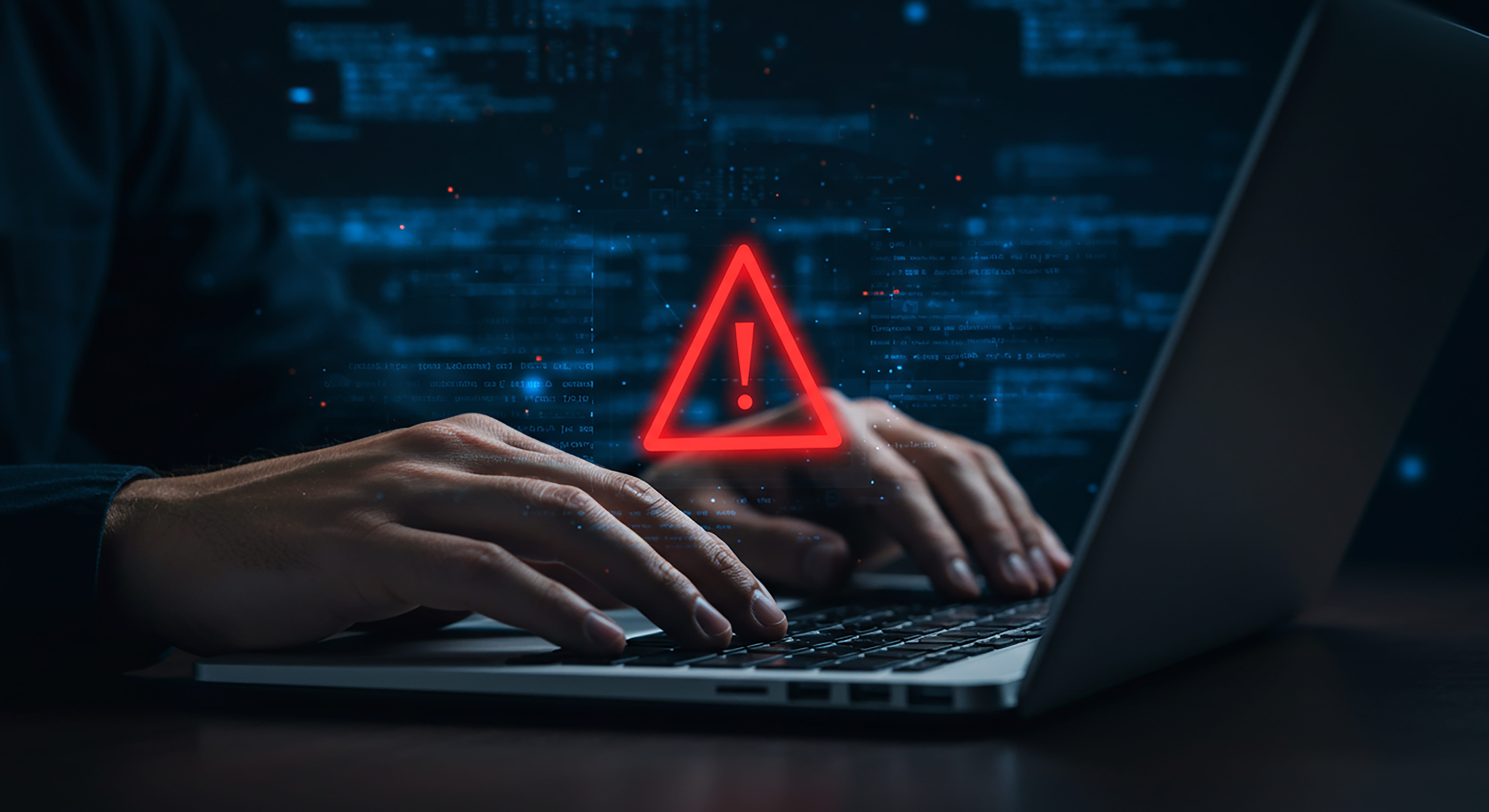?
Firstly, are you concerned and asking yourself what to do if you click on a phishing email? Your next steps can be critical so call Computronix ASAP!
Before we break down all of the different types of phishing and how to prevent them it is important to note; As more of our lives become dependent on cyberspace, the need for becomes increasingly important. This is true for both the individual and the organization.
Improvement in technology has not cut down cybercrime; losses have become even more devastating. Research by Cybercrime Ventures estimated that cybercrime cost the world about 6 Trillion dollars last year, and many authorities predict that global losses will reach 10.5 Trillion dollars by 2025. (https://cybersecurityventures.com/cybercrime-damages-6-trillion-by-2021/)
One of the oldest tricks by cyber criminals is . Despite the age of this method, it continues to be effective. Last year, investigations showed that 83% of organizations fell for tactics. But what is , and how can you protect your organization from ?
What is ?
is a cybercrime in which a cybercriminal tries to scam a person or organization by posing as a legitimate person or institution. The phisher has to extract from his to be successful.
The criminal can contact his prospective through various means. He could use telephone calls, emails, or text messages. On rare occasions, they contact their victims on platforms.
During contact, the attacker persuades the to give away data like banking and credit card details, identity information, and passwords to accounts. He then uses the derived information to perpetrate and defraud the .
Both individuals and organizations are susceptible to , but organizations often find it harder to curb a . The reason is that a will engage in a that targets people in the organization, and it only takes one person’s mistake to cause a breach that could damage the organization. The more people your business employs, the more vulnerable the business is to a . This is just another reason why network security is so important to organizations and businesses.
Why Can be Devastating To Your Business
will cost your company money. Several sources estimate that each successful operation on an organization costs an average of about 4 million dollars. Sometimes, the cost can get higher.
Financial damage is not the only thing that your company can lose. Many organizations that become victims of also experienced blows to their reputation. It is usually hard to keep attacks of this nature in the dark, and prospective customers tend to view such businesses as unreliable and untrustworthy. Researchers have calculated that a company can lose up to 40% of its customers after successful attacks. The loss of reputation and customers can be even more devastating than financial losses.
also disrupts the company’s workflow and triggers company values. A significant data breach in a company can lead to suspicion and internal investigations, all of which can reduce employees’ productivity. When a phishing attack is attempted, if completed can be disastrous for the business so having a disaster recovery plan is extremely beneficial in these situations.
The business will also lose partners, employees, and customers. Efficient employees who accidentally leak data to criminals will lose their jobs. Partners who lose their investment will disappear, and customers who can no longer trust a company will move to the competition.
What is ?
is one of the most sneaky and effective means of . In , a attacker uses a look-alike or copy of a legitimate or link when in reality it is a clone or . The clone link contains or virus that would lead the to a fake website or open his contacts to internet fraud.
is so efficient because it is hard to spot at first glance. often use the following tricks to make it more efficient:
- Copy the message of legitimate organizations word for word so they appear genuine. They only edit the links of the message.
- Make use of urgent messages requiring the to act fast without thinking.
- Using Name Spoofing, that is, copying the name of the legitimate source as the sender to make the mail look authentic.
An excellent example of that works is a is sent to ‘Hurry Up and Renew Your Card Before It Expires.’ The attacker will boldly display the name of the credit card company in the mail and send a malicious link. The urgent nature of this message makes it more likely to work.
The Difference Between And
While targets individuals in your organization in general, a is even more precise because it targets specific individuals. For this to work, the attacker must research his target. This ‘s specificity makes it even more dangerous and believable.
For example, if the attacker knows that an individual in the organization uses a Microsoft 365 Suite. These are experts at and making these to be as real and effective as possible. The attacker can send an requesting that he need to update his password and attach a link within the to what looks like the legitimate 365 login screen.
Once the target inserts his name and his password into the fake URL, the attacker can access the target’s account. Using this access, the attacker can launch various attacks on the individual and the company.
The reason why this type of is so successful is that it combines specificity with . The has no reason to doubt the because it is the kind of mail that Suite 365 can send. Plus, the looks legitimate enough to deceive him. Without all of these attacks are extremely difficult to detect.
Other Types of
A can come in various forms. To better protect your organization from it, you need to identify the many ways try to phish your employees. We have already identified two types of – and . Other types include:
Angler
Angler is a form of that targets unsatisfied . The attacker may disguise himself as a customer service agent or a company’s official account. They will seek out customers who complain about the services of a company (preferably a financial institution).
Once they gain the ‘s trust, they engage in a often by sending out a link containing . The installs itself on the ‘s computer once he clicks on the link. The link may also direct the to a fake that extracts information or money from them.
For example, a customer may complain about difficulty accessing his ABC bank account. The attacker may see it and quickly create a fake profile as an ABC bank customer care agent, and he would contact the customer as and offer to correct the error.
During their interaction, he could request that the customer give him sensitive details of his bank account, or he might send the customer a link to a fake site. This false site will request personal details, which will be used either for or fraud.
Executive /
Executive is a form of that targets the senior executives of an organization. People most at risk are the CEOs and CFOs of large companies. Another name for this kind of is Whaling or . As hard as it is to believe, one one of the most effective forms of .
convince executive employees to part with funds or about the organization. In this case, the attacks are more subtle and seek to manipulate the target. The tend to ditch fake links or malicious URLs for simple requests for help from an apparently ‘more senior staff’ or “client.”
For example, an attacker may send an to the CEO, claiming to be an important client. The will have specific information about the CEO, like his title, position, and phone number. Usually, the title of the will be marked as urgent and could request a long overdue payment. If the executive is busy or stressed, he might approve the transaction.
Executive is very effective because it contains precise details about its victims and .
Barrel
Barrel is a more sophisticated type of that uses a two-pronged approach. The attacker sends the target the first mail to establish trust, and once he establishes that trust, he will send a second mail with a malicious link or attachment.
This method is tough to detect or resist because the two-prong approach is a highly effective pressure technique that works many times. Victims are more inclined to trust multiple emails. Another reason why this type of works is because the sent emails are usually offering help.
For example, the employee of a company may get the first mail from an IT company warning him of a list of suspicious websites and links, which he must avoid. Half of the text would be missing.
Sometime later, usually within the hour, the will receive another informing him that the first mail forgot to include the link or attachment to the list of forbidden websites. The mail will urge the to click on the link or attachment.
Because he has received an earlier mail concerning this subject, the is more likely to trust this mail and click on the link. But once he does this, he installs or virus that extracts information from his system. Or he could be pushed to offer about his company.
What is Vishing?
Vishing is using verbal messages or phone calls to convince a person to give up that the attacker can use for dubious purposes. It is also called voice .
Like all other forms of , the attacker tries to convince the that it is in his best interest to give up . Some criminals use threatening messages to scare victims into taking hasty actions.
For example, a person could receive a call from someone who claims to be calling from law enforcement or a bank. The impostor threatens the with arrest or warns him about shutting down his account if he does not provide .
What is Smishing?
Smishing is a peculiar form of that uses or text messages to convince targets to give up . Social security numbers, insurance numbers, or credit card details are highly sought in a .
The attacker can steal his ‘s identity or funds with the information. When target organizations, funds or access to customers’ databases are usually the significant goals.
Smishing has become more popular because victims are more likely to trust text messages and not consider them as . They believe that scammers are less likely to get their phone numbers, but this is not true.
In reality, phone numbers are finite and more readily guessed or accessed by . Hackers can send messages to random combinations of numbers. Because people read 98% of text messages, this is much more viable than emails.
How to Prevent ?
When protecting your organization from , your organization is only as strong as your employee’s of standard techniques.
A significant way to prevent is by first contacting Computronix where we specialize in cyber security. Additionally, training yourself and your employees to identify suspicious messages. They can do the following:
- Check for inconsistent or outright poor grammar in emails and text messages and delete such messages immediately.
- Avoid clicking on links from a random message and or . They should report such emails as it could be a part of a .
- Always check the URL of each website that require . Secure websites usually begin with ‘HTTPS’ instead of ‘HTTP.’
- Avoid pop-ups, especially when visiting unsafe sites. Pop-ups have a ton of that can phish your system.
- Contact your company about .
As an employer, you can do the following to protect your business from :
- Rotate passwords to sensitive accounts between executive employees. This way, one employee doesn’t remain in one man’s power.
- Install the best and the latest firewalls. These firewalls would protect your systems from hacking.
- Update your systems and software regularly with recent protective technology.
- Use anti- apps and software that filter suspicious messages, spot , and alert you about known websites.
- Establish a data security platform to check and spot signs of cyber attacks.
Conclusion
is a that can only work with the ‘s cooperation. Usually, the attacker tries to convince the person to give out that he can use to defraud him.
can launch many forms against your company using several mediums, from phone to . The best way to protect yourself would be to learn a phisher’s tell-tale signs.
Be careful about clicking on strange links, check for grammar and consistent URL addresses, and install the latest firewalls and protective software. All these will reduce the chances of being scammed.
Are you concerned about your business’s cyber security? Contact Computronix today! We have been building, managing, and securing professional business networks for over 25 years.










